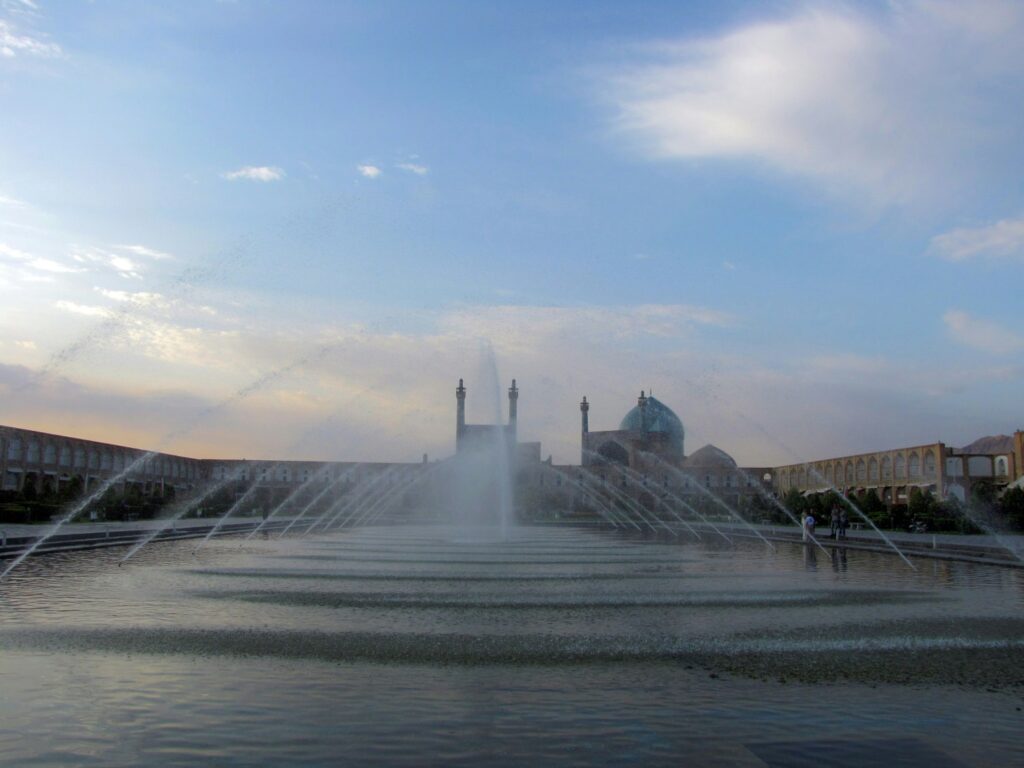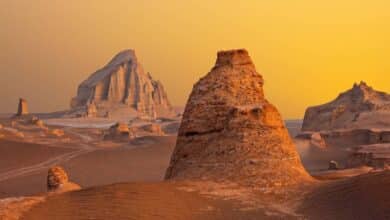Architecture of Isfahan: Marvels of Islamic Design and Engineering
A Journey Through Iran's Mesmerizing Design Legacy

Isfahan, a city known as Half the World (‘Nesf-e-Jahan’) in Persian verse, houses an architectural treasure trove that eloquently narrates the tale of Islamic design and engineering. Embracing an abundance of monumental wonders, it serves as a living museum of traditional Persian and Islamic architecture. Each structure, with its distinct geometric patterns, intricate tile work, and remarkable domes, echoes the craftsmanship and architectural prowess of the bygone eras, making Isfahan an unmissable destination for those eager to explore the marvels of Islamic design and engineering.
Contents
Architectural Marvels: A Journey Through Design Excellence
In the realm of Islamic architecture, Isfahan holds a distinctive place due to the unparalleled blend of aesthetics, engineering, and symbolism its structures exhibit. The city’s architectural grandeur lies not just in its scale but also in the profound attention to detail, the harmonious balance between form and function, and the intricate interplay of light and shadow. The design elements, steeped in the city’s rich cultural and historical context, serve as an enduring testament to the ingenuity and vision of its builders.

The Lasting Impact of Historical Events
Isfahan’s architectural zenith was reached during the Safavid Dynasty, specifically in the 16th and 17th centuries. During this period, Shah Abbas I made Isfahan his capital. I initiated a comprehensive city planning scheme that resulted in the construction of monumental structures, gardens, and a vast square, now a UNESCO World Heritage site. This era is often referred to as the “Golden Age” of Persian architecture, which saw the creation of iconic structures such as the Sheikh Lotfollah Mosque, the Shah Mosque, and the Ali Qapu Palace. These edifices reflect the grandeur of the Safavid era and underline the influence of politics and religion in shaping the city’s architectural landscape.
Exploring Cultural Intersections

The influence of Islamic culture on Isfahan’s architecture is apparent in the city’s aesthetic and symbolic use of geometric patterns, arabesque designs, and calligraphic inscriptions. These elements, deeply rooted in the Islamic ethos and worldview, are a signature feature of Isfahan’s architectural landscape.
The geometric patterns reflect the Islamic appreciation of unity and order. At the same time, the arabesque designs represent the notion of infinite, non-representational decoration, a testament to the Islamic belief in the infinite nature of God. The frequent use of Quranic inscriptions in architectural embellishments further underscores the intertwining of faith and art in Islamic culture. As such, Isfahan’s architecture serves not only as a physical manifestation of the city’s history and heritage but also as a spiritual compass pointing towards the profound influences of Islamic thought and culture.
Blueprints of Creativity: Essential Design Elements

Isfahan’s architectural designs are a testament to the mastery of Islamic artisans and their understanding of aesthetics and geometry. One of the distinctive elements that dominate the skyline of Isfahan is the dome. These domes, mostly found in mosques and madrasas, are recognized for their double-shell structure, fostering thermal regulation while providing an exquisite interior space. Similarly, minarets, slender towers traditionally used for calls to prayer, are a prominent feature of Isfahan’s cityscape. These towering structures, adorned with intricate inscriptions and geometric patterns, accentuate the verticality of the architectural ensemble and serve as a visual reminder of the presence of the divine.
The iwan, an open vaulted space often facing a courtyard, is another signature element of the city’s architecture. They serve both functional and aesthetic purposes, allowing a cool space in the heat of summer while providing a majestic entrance or backdrop to mosques and palaces.
Brick and tile are the primary materials used in Isfahan’s architectural wonders. The widespread use of brickwork, an ancient construction technique, lends a warm, earthy tone to the buildings, providing a striking contrast to the blue of the tiles. Meanwhile, the ceramic tiles, produced using a technique known as ‘haft rangi‘ (seven colours), are fired multiple times to create a lustrous, glass-like surface. The result is a stunning combination of durability and beauty, a testament to the skill and creativity of the artisans of Isfahan.
Navigating the Influence of World Cultures

Isfahan’s architectural legacy has wielded significant influence over the evolution of both Islamic and global architectural styles. Its synthesis of form, function, and ornamentation has inspired architects and designers across various cultures and epochs. The city’s innovative use of domes, minarets, iwans, and geometric patterns has been replicated and reinterpreted in diverse contexts, from the intricate wooden carvings of Central Asian madrasas to the grand mosques of the Ottoman Empire.
The city’s distinctive blue tiles became a sought-after aesthetic in many parts of the Islamic world, shaping the visual identity of places as distant as Samarkand and Istanbul. Beyond the Islamic sphere, elements of Isfahan’s architecture found their way into European architectural discourse, particularly during the Renaissance period, fostering a cross-cultural dialogue through the language of design.
The Art of Preserving Heritage

As custodians of Isfahan’s architectural heritage, various local and international bodies have undertaken significant efforts to preserve these historical sites. UNESCO’s designation of the Naqsh-e-Jahan Square as a World Heritage site underscores the global recognition of Isfahan’s architectural importance. Conservation initiatives primarily aim to maintain structural integrity, restore original aesthetics, and prevent further degradation of these towers.
It includes the careful restoration of tile work, strengthening of structures, and preservation of inscriptions. At the same time, these efforts extend to promoting awareness and appreciation of Isfahan’s architectural legacy, ensuring that these structures continue to inspire and educate future generations. These initiatives underscore the enduring relevance of Isfahan’s architectural gems, not just as relics of the past but as dynamic spaces of cultural expression and historical memory.
In conclusion, the architectural landscape of Isfahan is a magnificent testament to the city’s rich history, culture, and the profound influence of Islamic principles. Its carefully crafted structures, adorned with intricate patterns and distinctive design elements, demonstrate an extraordinary blend of aesthetics, functionality, and spiritual symbolism. The city’s architectural heritage not only shapes its visual identity but has also left an indelible mark on global architectural styles. As we endeavour to preserve these remarkable edifices, we continue to appreciate their timeless beauty, learn from their innovative designs, and honour their role as enduring symbols of a rich cultural past.







